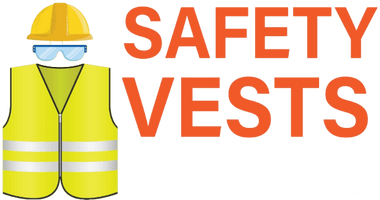
Are Black Hi-Vis Vests Legal?
Demystifying Black Hi-Vis Vests: Understanding Their Legality and Functionality
In the realm of safety apparel, high-visibility (hi-vis) vests stand as a ubiquitous symbol of workplace safety, ensuring visibility and protection for workers in various industries. However, questions often arise regarding the legality and appropriateness of black hi-vis vests in certain work environments. In this comprehensive guide, we'll delve into the legality of black hi-vis vests, explore their functionality, and address common misconceptions surrounding their use.
Understanding Hi-Vis Vests
Hi-vis vests, also known as reflective vests or safety vests, are garments designed to enhance visibility in low-light conditions or environments with moving vehicles or machinery. These vests feature fluorescent colors such as yellow, orange, or lime green, coupled with retroreflective tape or strips that reflect light back to its source, increasing visibility and reducing the risk of accidents or collisions.
Legality of Black Hi-Vis Vests
The legality of black hi-vis vests depends on specific industry regulations, workplace policies, and job requirements. While black is not typically recognized as a standard hi-vis color due to its low visibility, there are situations where black hi-vis vests may be permitted or even required:
-
Specialized Roles: In certain industries or job roles where standard hi-vis colors may not be suitable or practical, black hi-vis vests may be authorized. Examples include security personnel, law enforcement officers, and event staff who require a more professional or inconspicuous appearance while maintaining visibility in their respective roles.
-
Customization: Some workplaces allow for customized hi-vis apparel to accommodate specific job functions or corporate branding. In such cases, black hi-vis vests may be incorporated into the uniform design while adhering to safety standards and visibility requirements through the use of reflective materials or contrasting colors on the vest.
-
Regulatory Compliance: It's essential to consult industry regulations, safety standards (such as ANSI/ISEA 107), and workplace policies to determine the legality of black hi-vis vests in a particular context. Employers are responsible for ensuring that all safety apparel, including hi-vis vests, meets regulatory requirements and provides adequate visibility for workers.
Functionality of Black Hi-Vis Vests
While black hi-vis vests may deviate from traditional fluorescent colors, they can still serve the primary function of enhancing visibility and safety in the workplace when designed and utilized effectively. Consider the following factors when assessing the functionality of black hi-vis vests:
-
Contrast and Visibility: Black hi-vis vests should incorporate contrasting elements such as reflective tape, stripes, or panels in bright colors to improve visibility and distinguish wearers from the background environment. The contrast between black fabric and fluorescent or reflective materials enhances conspicuity in various lighting conditions.
-
Job-Specific Requirements: Assess the specific visibility needs and job functions within your workplace to determine the suitability of black hi-vis vests. In environments with minimal ambient light or where standard hi-vis colors may not provide sufficient contrast, black hi-vis vests with strategically placed reflective elements can enhance visibility and safety.
-
Compliance with Standards: Ensure that black hi-vis vests comply with relevant safety standards and regulations governing high-visibility apparel. Verify that the vests meet ANSI Class 2 / ANSI Class 3, ISEA 107 or other applicable standards for color, retroreflective performance, and design requirements to ensure effectiveness and regulatory compliance.
Conclusion
In conclusion, the legality and functionality of black hi-vis vests depend on industry regulations, workplace policies, and job-specific requirements. While black is not a standard hi-vis color, there are situations where black hi-vis vests may be permitted or even preferred for specialized roles or customization needs. Employers and workers should assess visibility requirements, safety standards, and regulatory compliance when considering the use of black hi-vis vests in the workplace.
For a comprehensive selection of high-quality hi-vis apparel, including standard and custom options, visit Safety Vests And More today. Your safety is our priority, and we're here to provide you with the safety solutions you need to thrive in any work environment.
